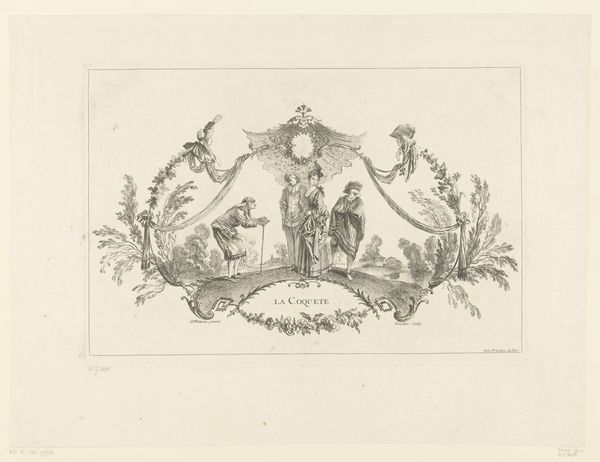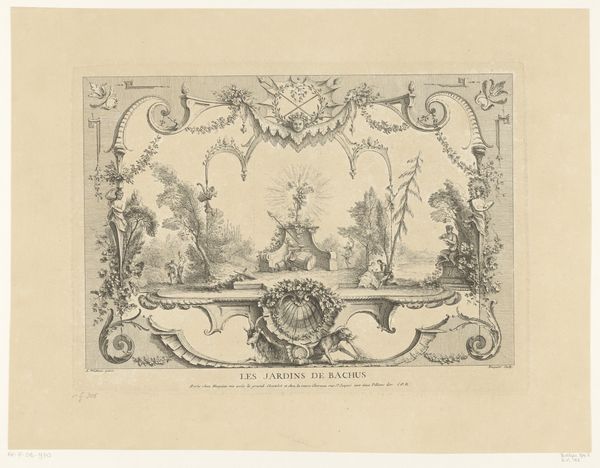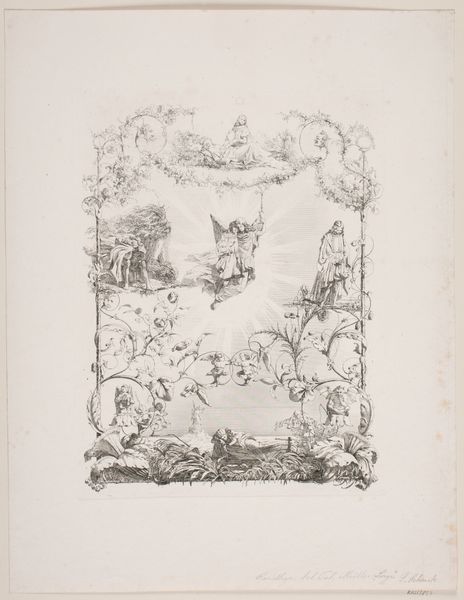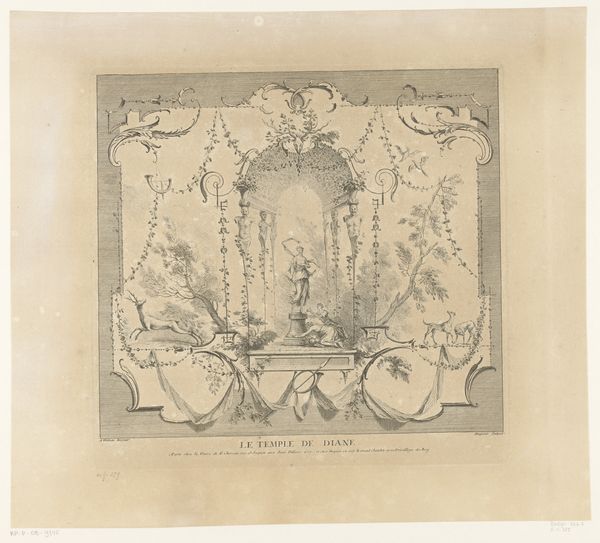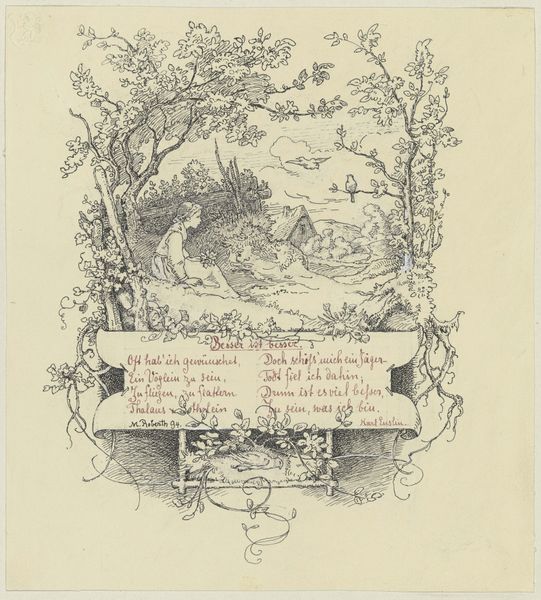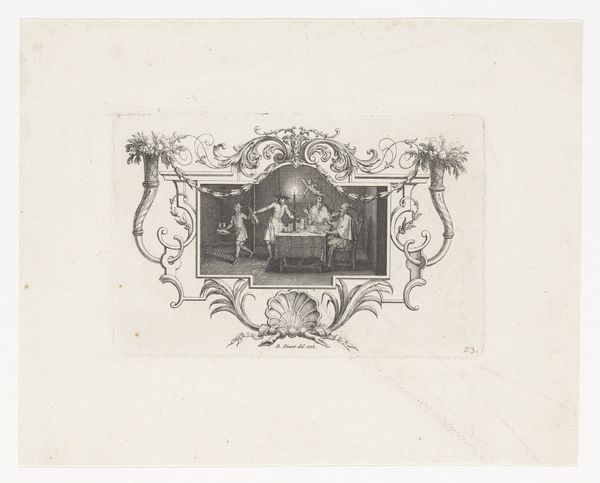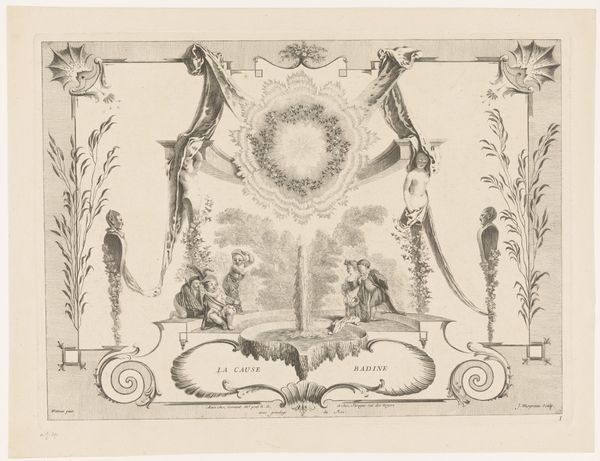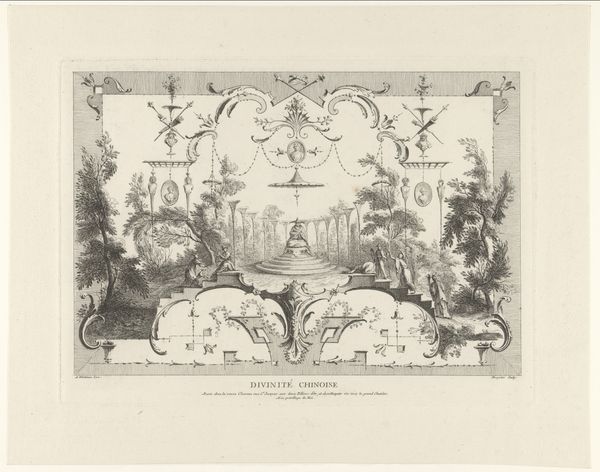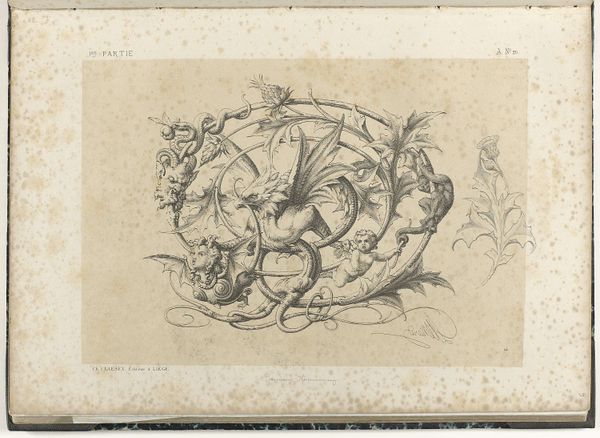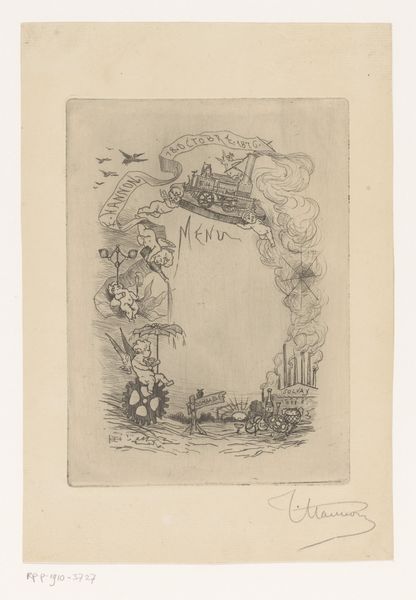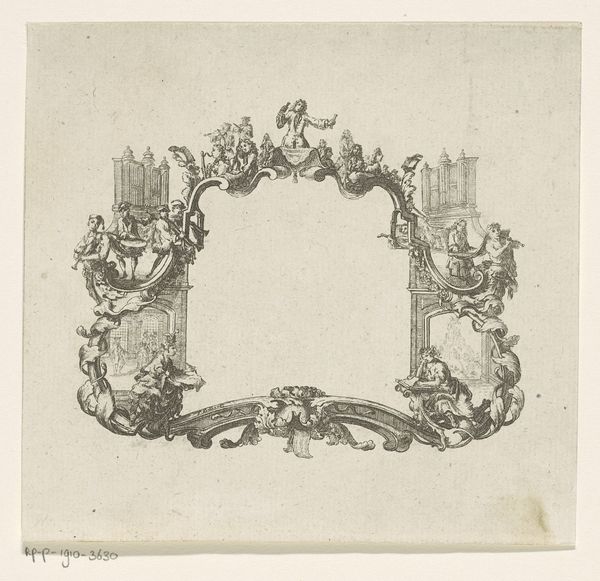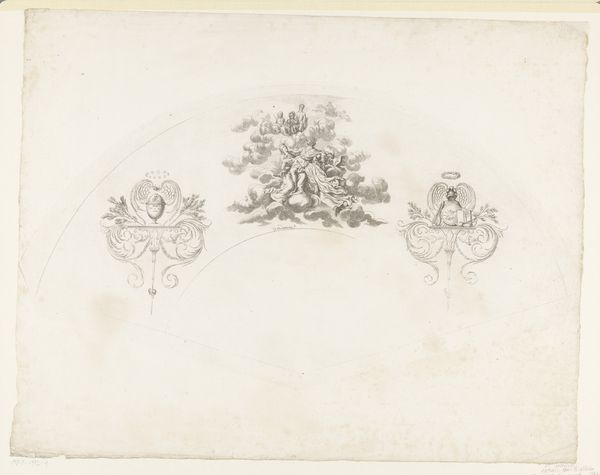
Allegorische voorstelling met een man en vrouw in landschap 1729 - 1737
0:00
0:00
gabrielhuquier
Rijksmuseum
intaglio, engraving
#
allegory
#
baroque
#
intaglio
#
landscape
#
genre-painting
#
history-painting
#
engraving
Dimensions: height 281 mm, width 406 mm
Copyright: Rijks Museum: Open Domain
Editor: So, we have here "Allegorische voorstelling met een man en vrouw in landschap," an engraving from somewhere between 1729 and 1737 by Gabriel Huquier. It's located at the Rijksmuseum. The scene feels staged, almost theatrical. What do you make of the way it reflects the societal expectations of the time? Curator: It’s a fascinating snapshot into the visual culture and its functions of the 18th century. Engravings like these were central to circulating ideas and values. This image, ostensibly about a “happy meeting,” reveals a great deal about how relationships and landscapes were idealized and consumed. Look at the carefully constructed scene; it's less about realism and more about projecting an image of pastoral harmony, wouldn’t you agree? Editor: Definitely. There's a definite emphasis on projecting an image, on constructing a certain reality. The attire, the idyllic setting—it all seems deliberate, aimed at conveying a specific message. Does that tie into the concept of public image, and how art was used to shape it? Curator: Precisely. Art in this period often served as a tool for reinforcing social hierarchies and promoting particular moral values. The allegorical elements contribute to this; the figures likely represent virtues or ideals, not just individuals. Consider who these images were intended for and what messages they reinforced about class, gender, and power. Does understanding the engraving's role in public life change how you perceive it? Editor: It does. Seeing it as a piece actively participating in societal dialogue, rather than a passive depiction, adds a whole new layer of meaning. It highlights the power art had in shaping perceptions and maintaining certain norms. Curator: Exactly! And by questioning those norms reflected, we can start to unpack the social and political landscape of the time in greater detail, hopefully using that knowledge to reshape and interrogate similar circumstances within our contemporary experience. Editor: This has given me so much to think about regarding the relationship between art and society during the Baroque period. Thank you!
Comments
No comments
Be the first to comment and join the conversation on the ultimate creative platform.
